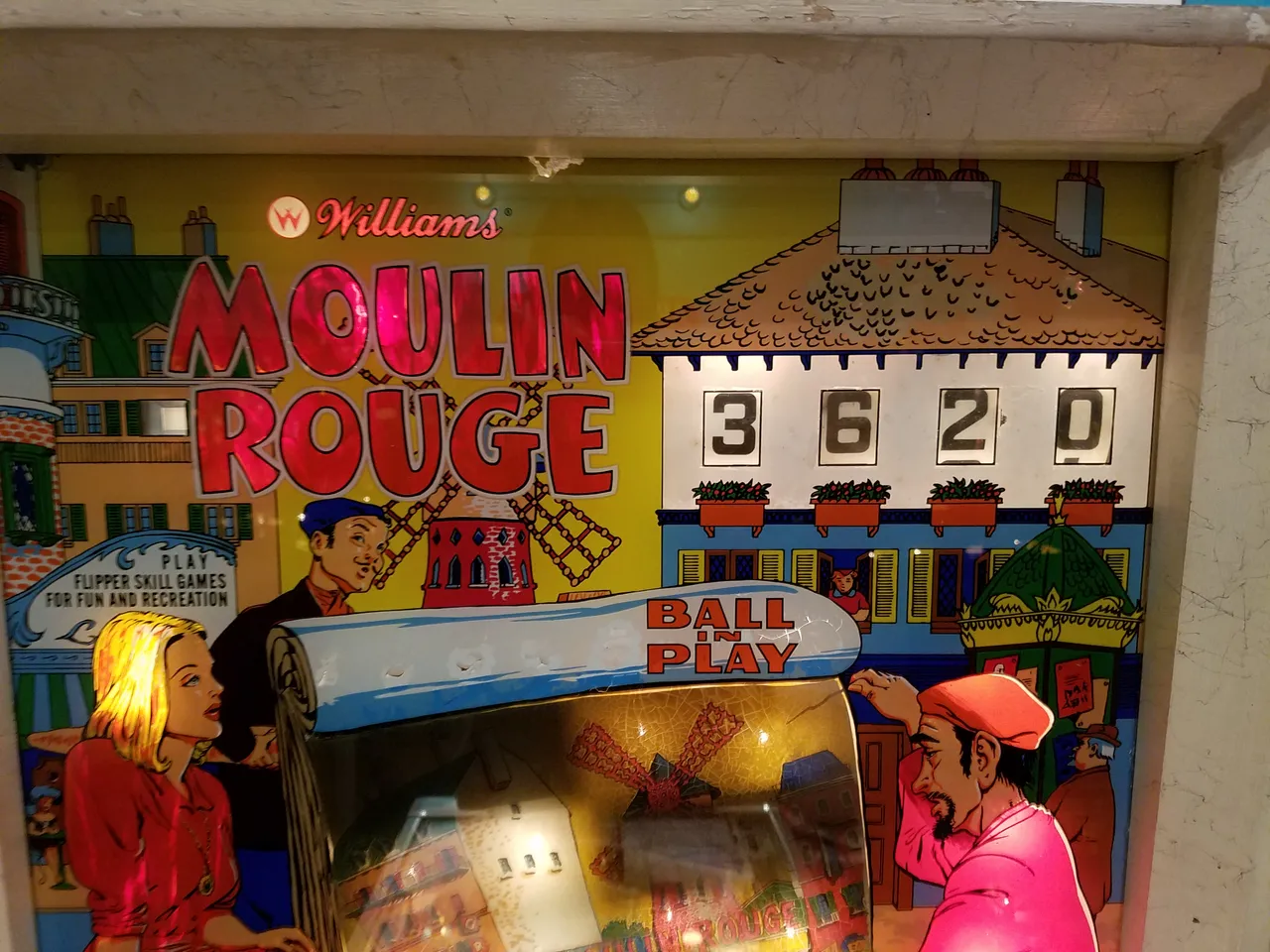
Pinball games are physical machines that were popular for decades before the advent of computer games. Because of the design and craftsmanship, the unique quality of each game, and the sheer joy of playing something so substantive (as opposed to programmed video games), several of my previous posts have featured some pinball. In some corners of the world, you can still find machines to play, which are largely maintained by pinball historians and other hands-on enthusiasts. I’ve visited a few pinball museums and other locations with public machines. That has given me the opportunity to play a lot of different pinball games from decades past.
Here are my favorite games. This group of machines begins in the 1960s. While the earlier games evoke the nostalgia of their eras, the 1950s and earlier games were not very controllable. It was largely a game of chance in terms of where the ball would go; skill was barely a factor. While there’s always that element of chance with every pinball game, the later ones allow you to play longer and accumulate more points by playing them well. In addition, there are three 1980s games and one from the 1990s represented here.
Moulin Rouge (1965)
While I’ve played early pinball games from the 1950s and 60s, most are a novelty and not that enjoyable. There isn’t much of a control factor. The ball slips down way too often into that gaping hole between the paddles. And even when the game is on, it’s difficult to get balls back up near the top of the playing area. Entropy reigns.
What a joy it was to discover Moulin Rouge, a 1965 game that plays like it was made a decade later. The theme is self-explanatory, as it carries the name of the famous Parisian cabaret. At first, the design seems a little spare with a large mirror on the backboard that’s held up as some street art. Is the game player supposed to be the star of the show? Interesting. But as I played a few games, the backboard strangely transformed. The Boulevard de Clichy came alive with a beautiful piece of street art showing the cabaret (see picture above).
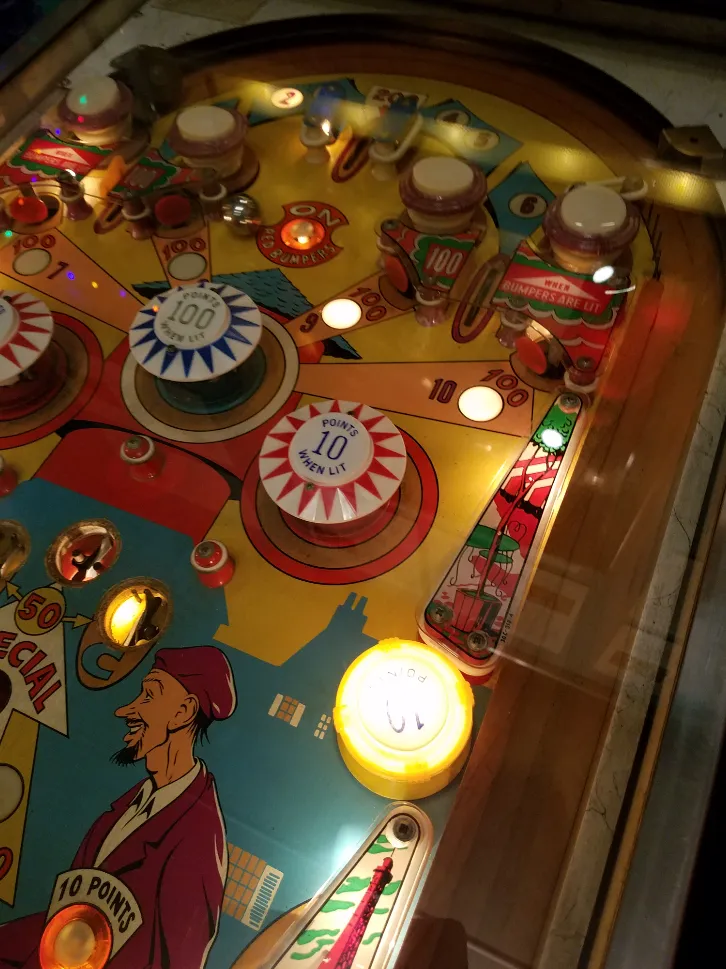
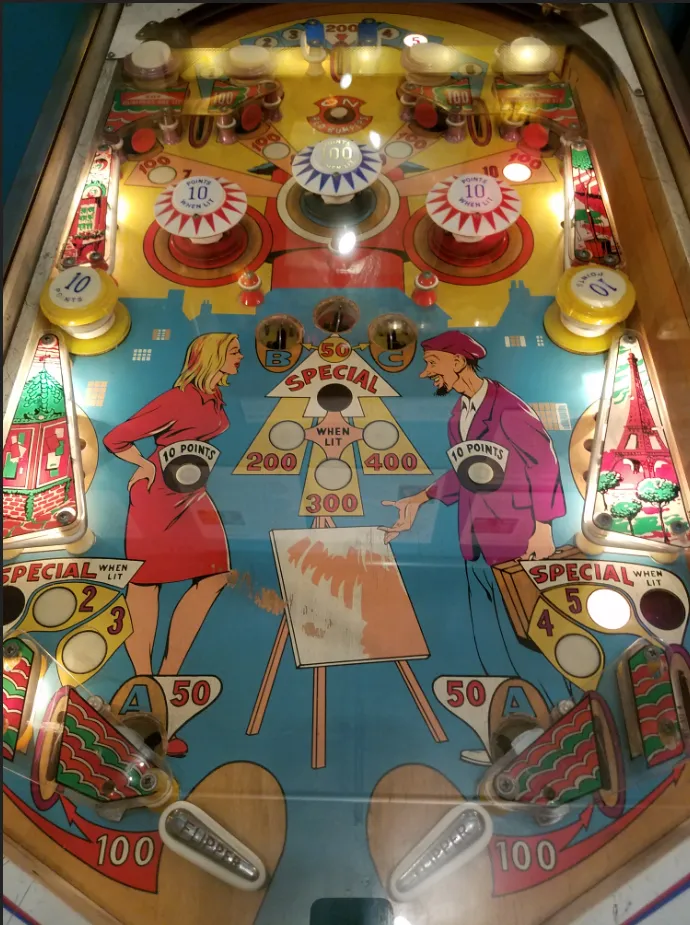
The outstanding design continues with the game itself. The last time I played this in a pinball museum, I was hooked on it for 45 minutes straight. The flippers give you a lot of control, there are multiple levels of intrigue from top to bottom (and the game gives you a chance to get the ball back up to the top level), there are bulbs that light up, there are holes that shoot the ball out again, and there is a fun A-B-C sequence to complete. Also, the aforementioned picture on the mirror behind the game lights up each part of the image as you complete stages of the game.
Brilliant! I’d buy one of these myself if it came with its own pinball mechanic.
Flash Gordon (1980)
Perhaps you’ve heard of this comic and/or a movie by the same name. It was an old comic and they made this pinball machine around the same time as a movie. Frankly, I’ve never really watched it and have no interest, but Bally made a nice game with this theme.
This game is special in that it was the first to incorporate a squawk box vocalizer for the audio. I did not know this when I was playing it and do not recall hearing much audio; either it was disabled on my machine or the arcade noise around it prevented me from noticing the audio. Also, the game has a split level, giving you two games in one. Here is a picture of the upper section, which has its own flipper. It’s harder than it should be to get the ball back up there, but still plenty entertaining.

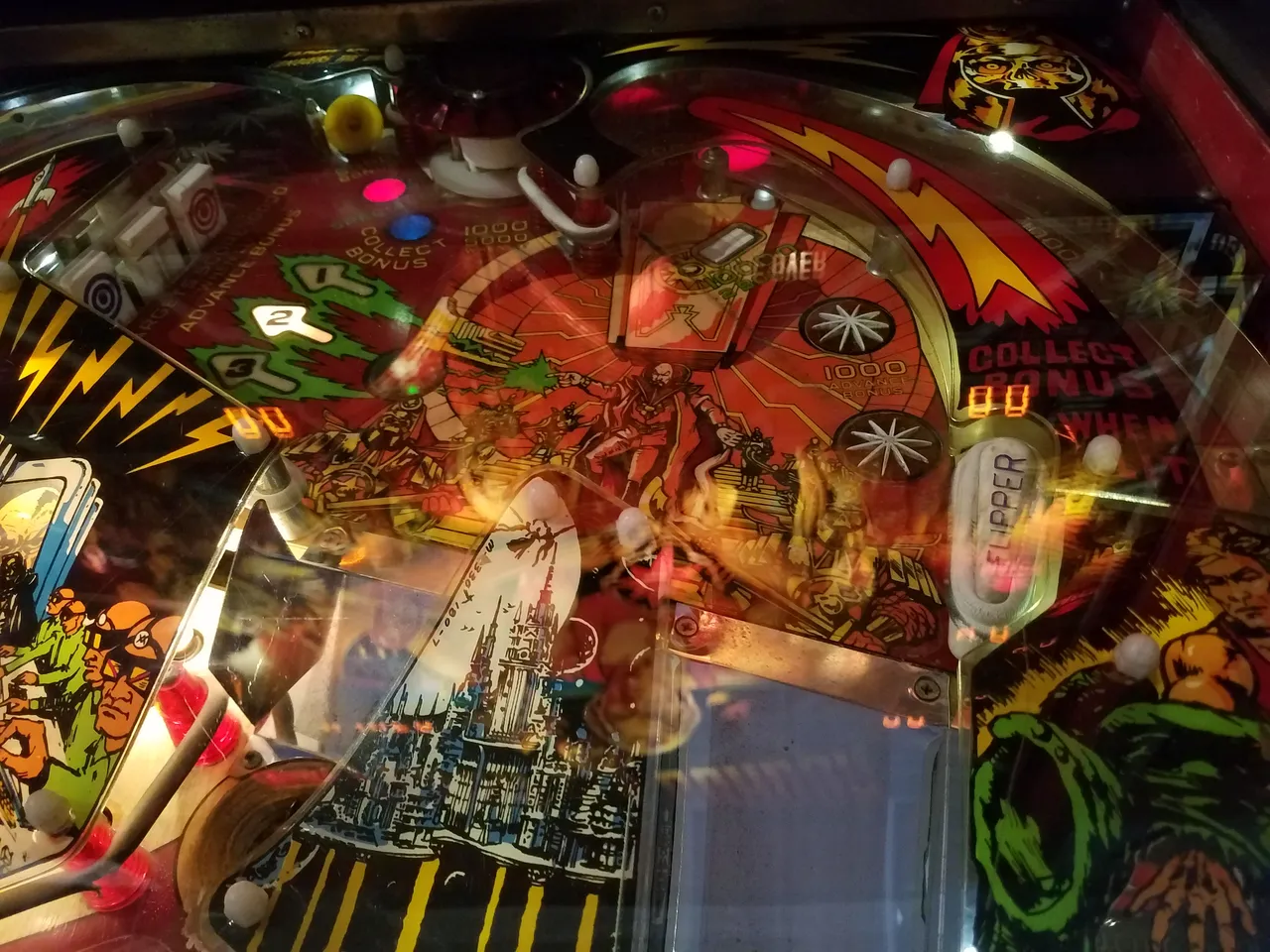
This is a fun game. I look forward to playing it again someday.
Seawitch (1980)
Hold on to your seahorses. This one has a live ball. I hit it so hard that the steel ball hit the glass cover a couple of times. And the ball continues to jump through the game. Seawitch has two levels with two sets of paddles. The game supplies lots of action, plenty of light, and all the bulbs and bonus opportunities you could want. There are signal lights to activate when you have scored a bonus, additional points, or a spare ball.
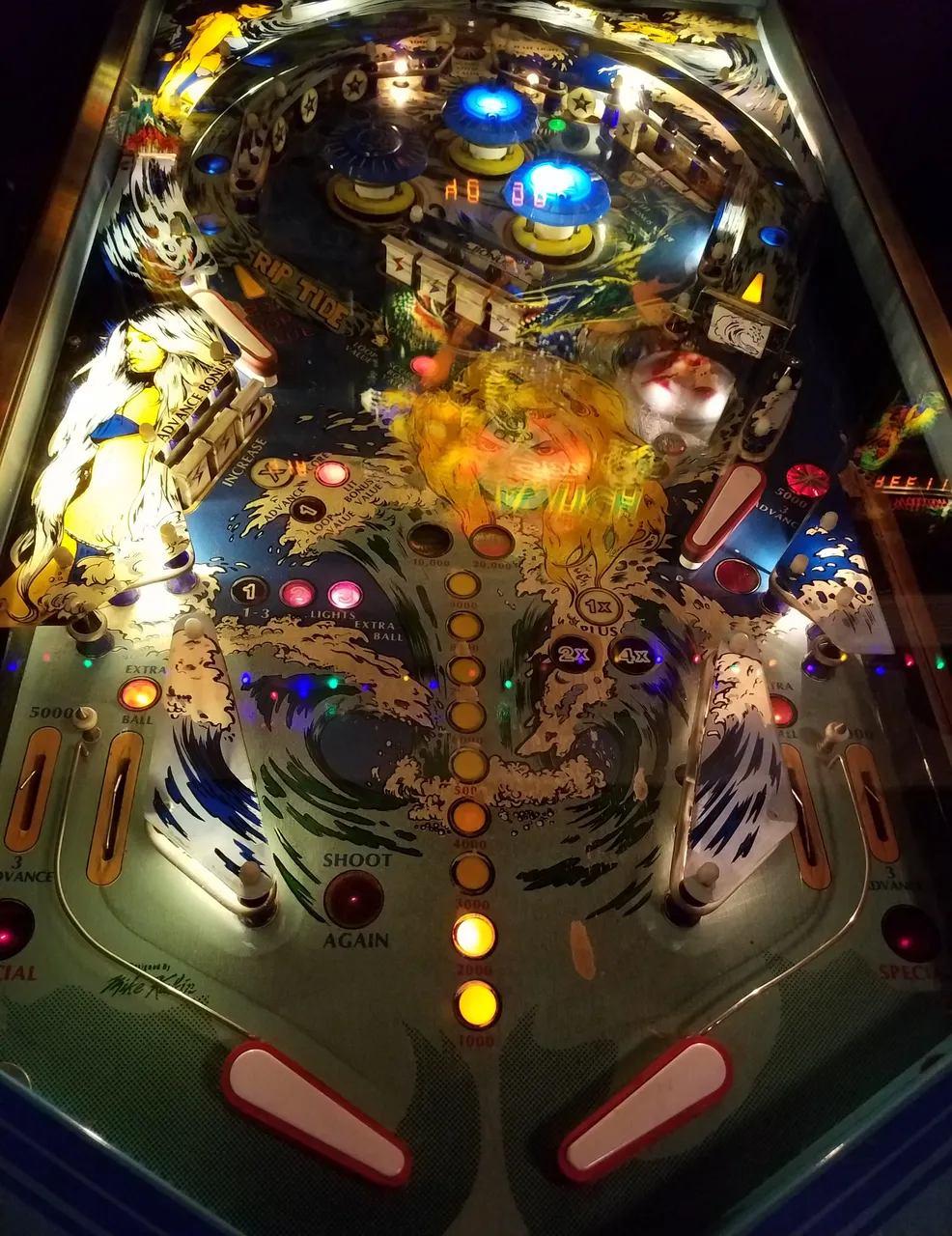
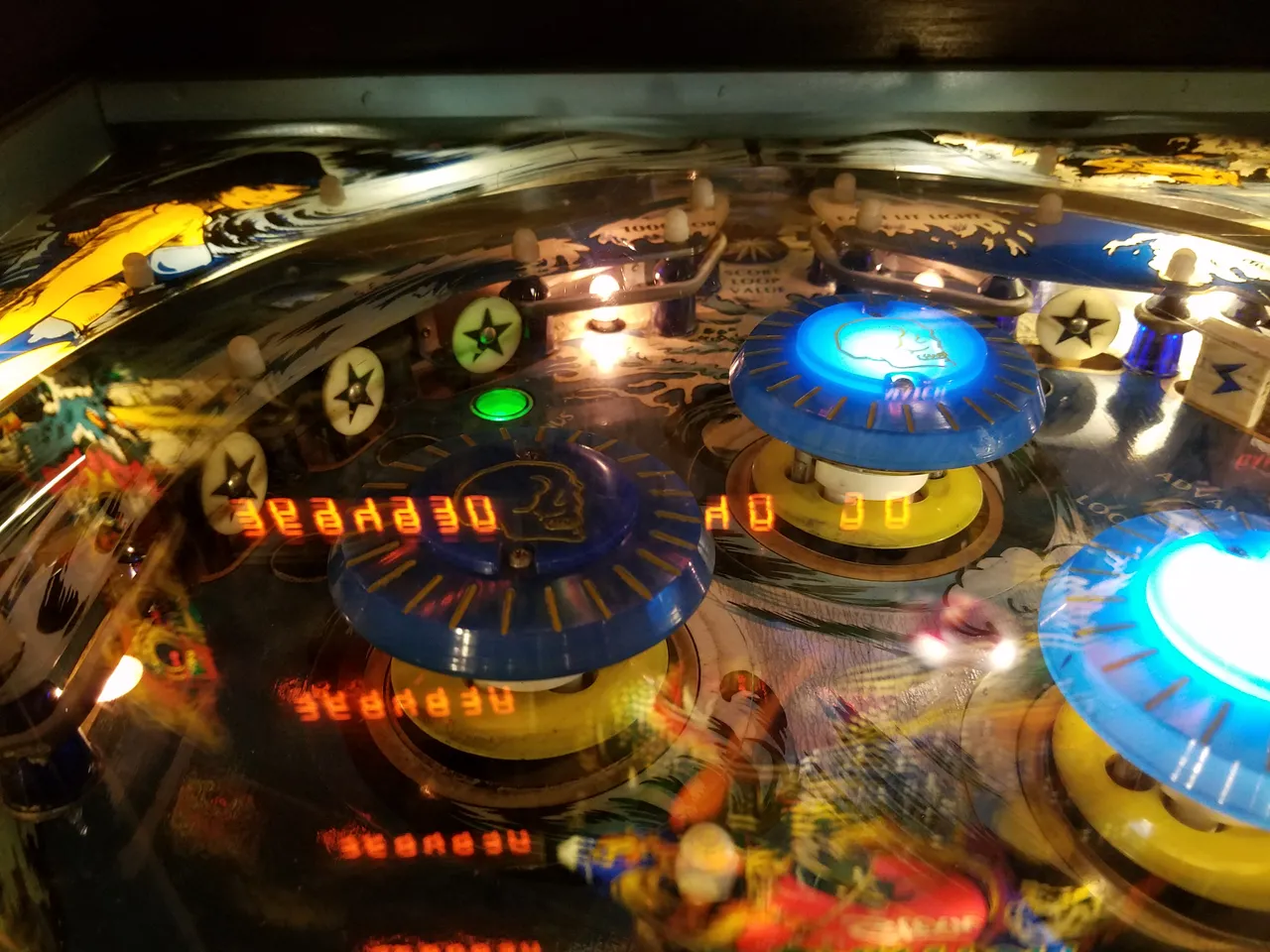
In fact, I’d guess this game has far more components than most games did in 1980. That was a good year for games (well represented on today’s list), but few of the games are nearly this fun to play. Seawitch gives you long plays with a lot of bang for your buck and opportunities to cheat entropy by getting the ball up to the top level again. I love it!
Black Knight 2000 (1989)
I’ve played two versions of Black Knight. The first was made in 1980 and I didn’t really like it much. From that year, give me Seawitch or maybe Flash Gordon instead. But the Black Knight 2000 reboot, released in 1989, is terrific. That year wasn’t quite the millennium yet; why didn’t they call it Black Knight 1989? I guess that name wouldn’t have the same ring to it.
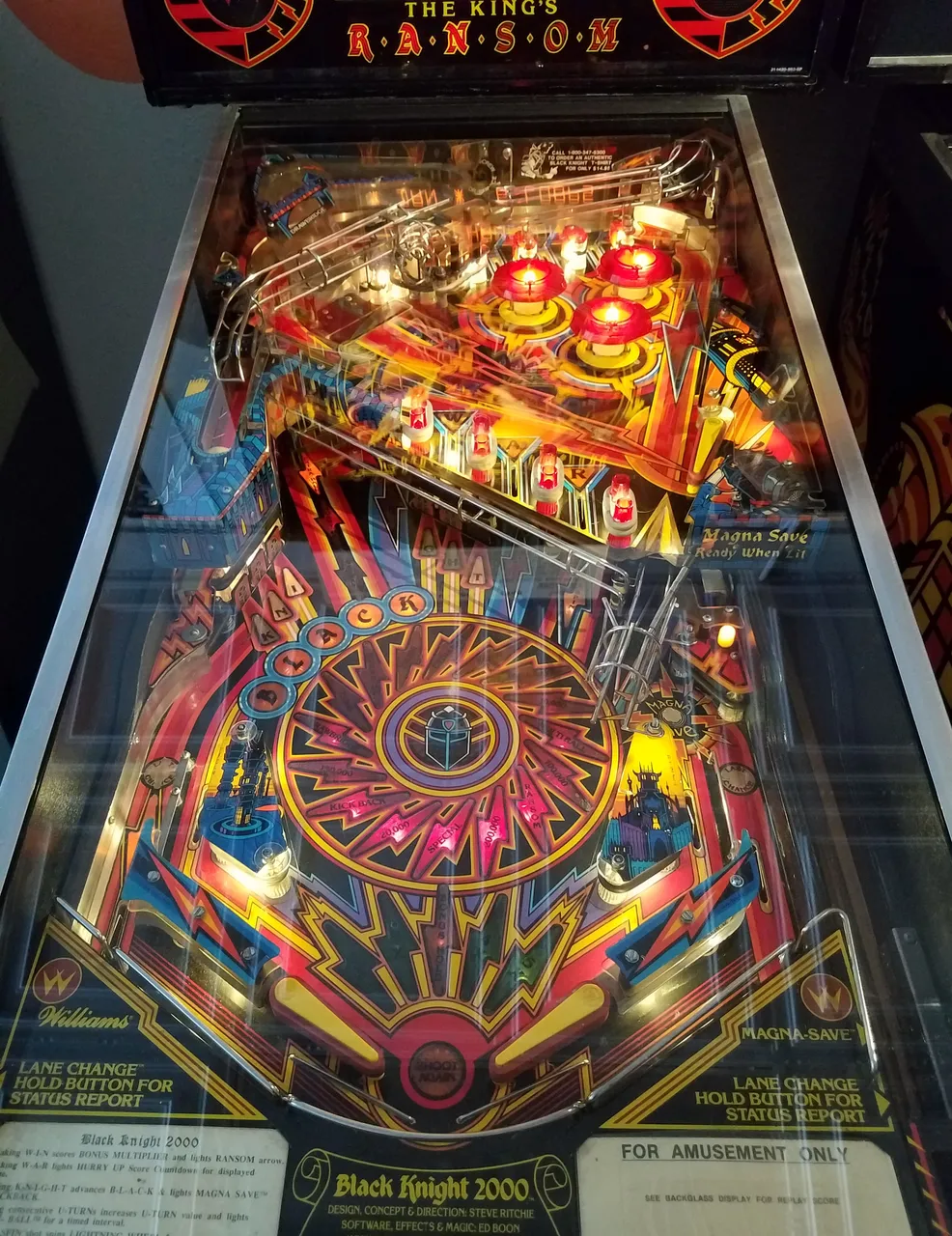
Black Knight 2000 is a multiplayer game that awards extra time to the player with the highest score. This isn’t just a split-level machine where the ball bounces through the top level a couple of times on its initial descent. The top level of this game is there for playing and it’s a thrill. In fact, if this game has a weakness, I’d say it’s the lower half of the playing field, which is somewhat bare. It’s still a nice ride.
Theater of Magic (1995)
This is an incredibly entertaining game, as fun as any pinball machine I’ve ever played on. In keeping with its theme, this game is loaded full of magic tricks and their diversity is stunning. It has a steel frame tunnel for the balls at the top, resembling the marble track on a Rube Goldberg machine. There is a magical box at the top and if you can get the ball in, you can raise it and the ball disappears to activate the multi-ball option.
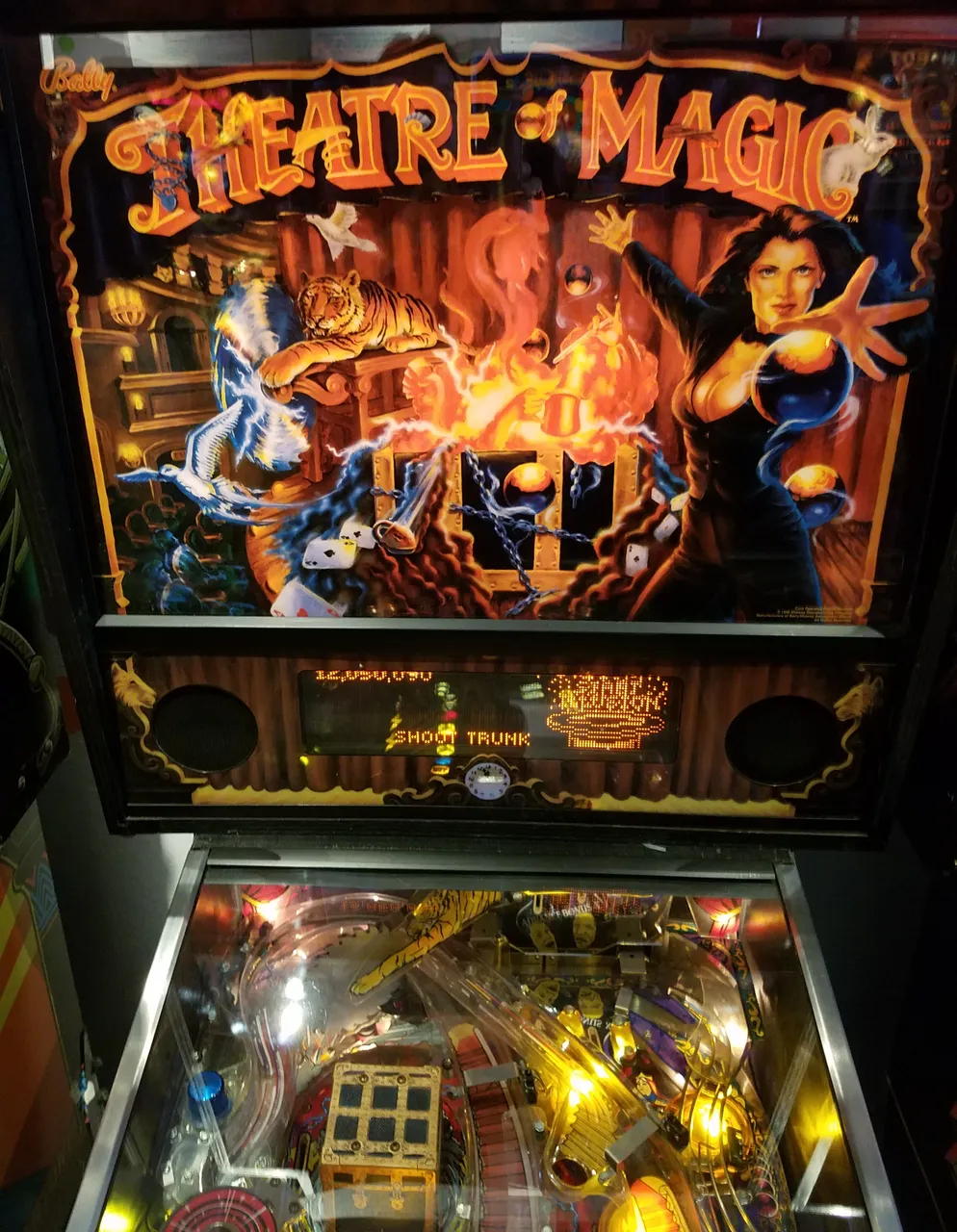
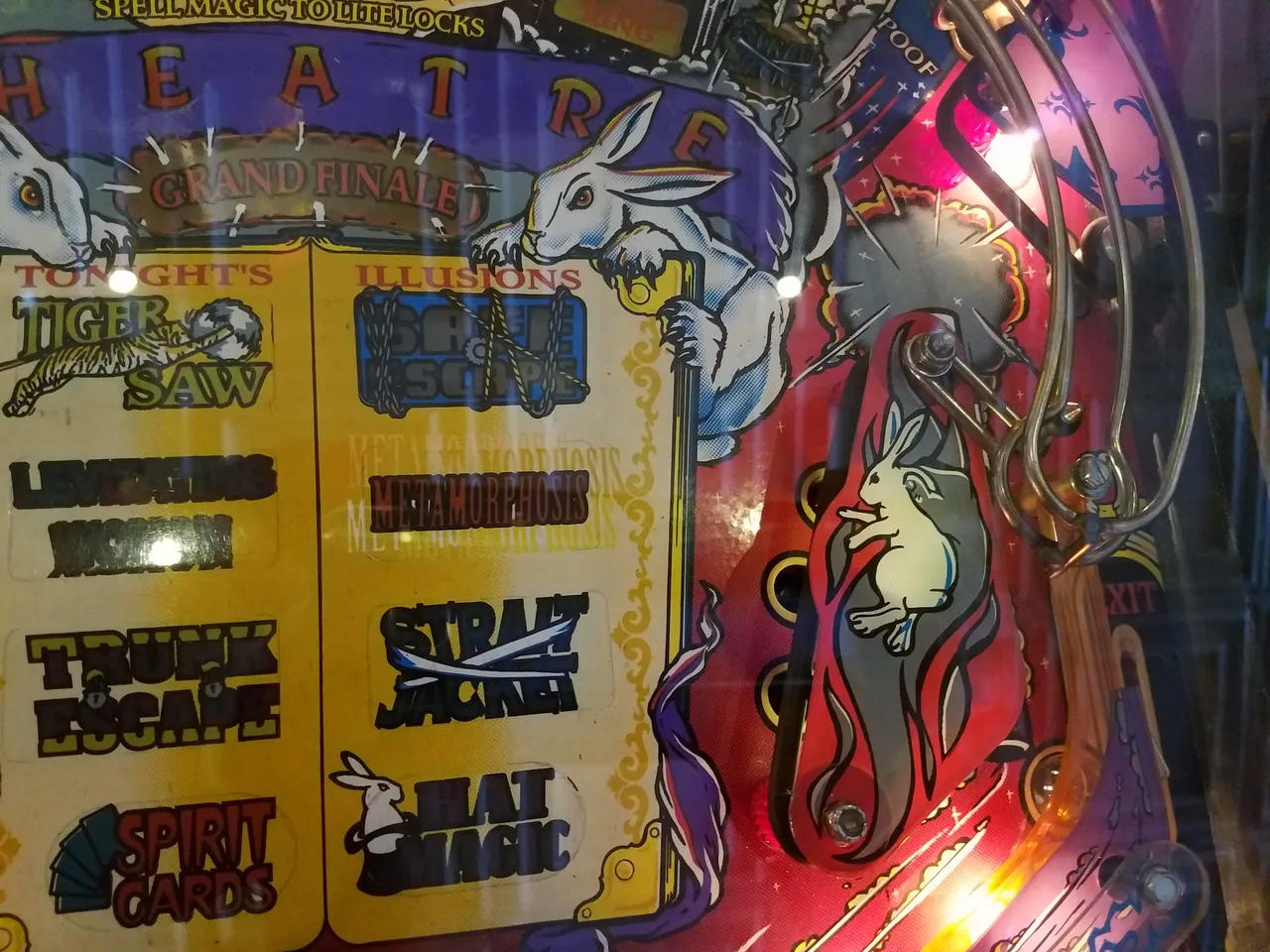

The main play is to complete several different magic tricks. Cards, metamorphosis, straight jacket, a magic hat, and others are nicely built in. Finally, it leads to a grand finale. I cannot even imagine how many pieces and moving parts this machine has; it must have been either a tinkerer’s dream or a complete nightmare to build and maintain the Theatre of Magic game. My only complaint is the audio, which is somewhat over-the-top; I would disable it if I had my own game of this.
You can see a video of someone playing it here:

Finding a Pinball Game
If you’d like to play pinball, here is a map of current public locations. There aren’t many of these games left, but it’s a much different experience than playing on a computer or phone. And if you can find a good selection of old games somewhere, perhaps you’ll look for one of my favorites.
https://pinside.com/pinball/map/mapbox?f=locations#1.71/35.2/-66.4/0/26
Here’s a map showing North American locations:
https://pinballmap.com/
This site is a good general resource for pinball games; I consulted it as I was writing the above reviews.
https://pinside.com/pinball/machine
Photos by the author and family members. Yes, the top image is my high score.